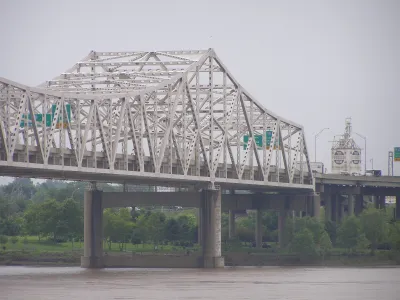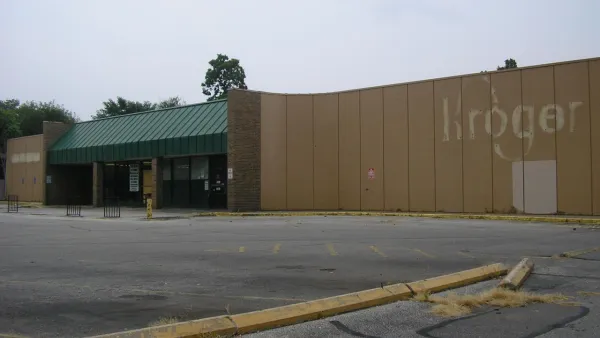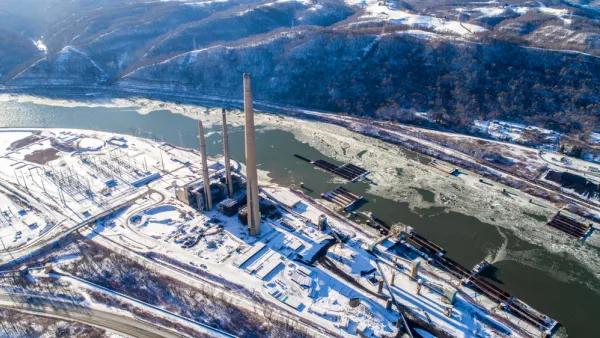Aaron Renn says the bridge projects in and near Louisville, Kentucky, were too expensive and have not led to any positive transportation or economic results.

In a piece on his blog, Aaron Renn writes about the Louisville-Southern Indiana Ohio River Bridges Project, which he says he was skeptical about back in 2007 when the proposal was first floated.
After taking a closer look at the traffic data, he says the outcome is even worse than he imaged. “The project has proven to be a money waster of the highest order, and in fact by far the biggest American transportation boondoggle I can identify in the 21st century so far,” says Renn.
The Interstate 65 bridge is a parallel span connecting Louisville, Kentucky, to Jefferson, Indiana, and it doubled the number of lanes across the river. The East End Crossing is a new bridge built up the river from downtown Louisville. The price tag for each bridge was $1.38 billion, and both crossings added tolls to help cover the project costs. The result, says Renn, is that traffic shifted to the two free bridges in the area, and the number of vehicles on the I-65 bridge dropped 50 percent between 2013 and 2018.
He also argues that expanding the crossing in downtown Louisville sliced up the area in detrimental ways. In addition, he points to data showing that truck traffic on the I-65 spans dropped by over 30 percent. “Where did they go? If you are a region that’s banking on the distribution industry for a big part of your future blue-collar employment growth, the tolls on these bridges can’t be good news. That’s particularly true when no surrounding competitor city has tolls.”
Renn says the bridge project made no sense, both from a transportation perspective and a fiscal one. And at a time when states claim funding for transportation projects is tight, pouring money into a project like this one, while better projects fall by the wayside, is problematic, he says. “This boondoggle didn’t happen by accident. It wasn’t a result of ignorance. It was well known in advance that it was a bad idea. It was a deliberate, conscious choice.”
FULL STORY: Louisville Bridges Project Is the Biggest Transportation Boondoggle of the 21st Century

Analysis: Cybertruck Fatality Rate Far Exceeds That of Ford Pinto
The Tesla Cybertruck was recalled seven times last year.

National Parks Layoffs Will Cause Communities to Lose Billions
Thousands of essential park workers were laid off this week, just before the busy spring break season.

Retro-silient?: America’s First “Eco-burb,” The Woodlands Turns 50
A master-planned community north of Houston offers lessons on green infrastructure and resilient design, but falls short of its founder’s lofty affordability and walkability goals.

Test News Post 1
This is a summary

Analysis: Cybertruck Fatality Rate Far Exceeds That of Ford Pinto
The Tesla Cybertruck was recalled seven times last year.

Test News Headline 46
Test for the image on the front page.
Urban Design for Planners 1: Software Tools
This six-course series explores essential urban design concepts using open source software and equips planners with the tools they need to participate fully in the urban design process.
Planning for Universal Design
Learn the tools for implementing Universal Design in planning regulations.
EMC Planning Group, Inc.
Planetizen
Planetizen
Mpact (formerly Rail~Volution)
Great Falls Development Authority, Inc.
HUDs Office of Policy Development and Research
NYU Wagner Graduate School of Public Service




























